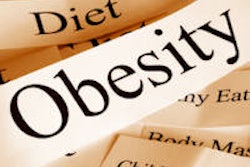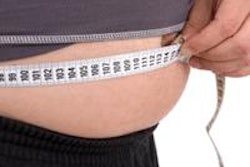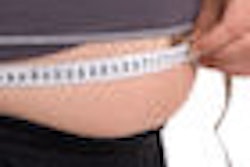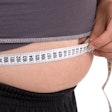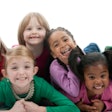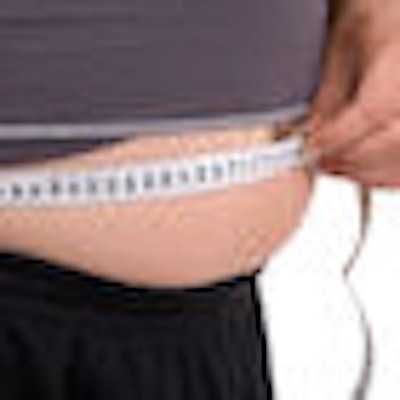
Several studies have shown that obese patients are at an increased risk for periodontal disease. Now a new study has found that tracking adiposity changes in men may help predict their risk of periodontitis progression (Journal of Dental Research, August 14, 2012).
The study found that males who rapidly gain weight, waist circumference, and arm fat had more periodontitis and periodontitis progression compared with those who had smaller gains.
This study is a continuation of research published in the Journal of Clinical Periodontology (February 2012, Vol. 39:2, pp. 107-114), which found that both overall obesity and central adiposity are associated with increased hazards of periodontal disease progression events in men.
The number of adults with periodontal disease is on the rise in the U.S., particularly among men, study author Andrea Gorman, PhD, manager of clinical nutrition services for Rhode Island Hospital and Hasbro Children's Hospital, told DrBicuspid.com.
It is unclear whether obesity -- an inflammatory condition -- causes periodontal disease or vice versa, she added, noting that a bidirectional relationship may exist.
"Oral health has a direct impact on nutrition status, and as the U.S. has a growing malnutrition problem -- which includes both under- and overnutrition -- oral health will need to be factored into the patient-centered health model," Gorman said.
Longitudinal study
Gorman and her colleagues examined whether gains in body weight, waist circumference, and arm fat were associated with periodontitis progression in nondiabetic men who participated in the prospective Veterans Affairs Dental Longitudinal Study (DLS). The DLS and the Normative Aging Study are components of the Massachusetts Veterans Epidemiology Research and Information Center, which is supported by the U.S. Department of Veterans Affairs Cooperative Studies Program.
“Practitioners should be comfortable referring patients for nutrition education.”
"Since the DLS is an ongoing cohort, it makes sense to use as much longitudinal data as we have available to us," Gorman explained.
The study participants were 893 white males from the closed-panel, observational, cohort study of aging and oral health among healthy men. Data used in the present study were collected between 1968 and 1998.
The unique element of this study is the longitudinal look at trends over a significant amount of time, according to Gorman.
"The DLS study has followed these participants since 1968, where many other studies are cross-sectional in nature or follow participants over four or five years," she explained.
During the DLS, the participants' oral health, weight, medical health, and lifestyle were assessed at triennial dental and medical examinations. Participants completed questionnaires concerning oral hygiene and smoking habits. Educational status was collected at baseline.
Probing pocket depth (PPD) was measured by calibrated examiners. Presence of periodontitis at baseline was defined as four or more teeth with PPD of more than 3 mm.
At each medical examination, height, weight, waist circumference, triceps fat fold, and midarm circumference were measured.
Here are some of the study findings:
- Men who were overweight at baseline and gained weight most rapidly (> 0.19 kg/year or approximately 15 lb during follow-up) had significantly more PPD events than men in the lowest tertile of weight gain (≤ -0.05 kg/year).
- Overweight men whose waist circumference increased more than 0.14-0.39 or more than 0.39 cm/year experienced more PPD events than men in the lowest tertile (≤ 0.14 cm/year).
- Increase in arm fat area was associated with disease progression in normal-weight men.
- The findings were less clear for those participants already obese at enrollment; this may be due to the low prevalence of obesity (8%) and the large number of overweight men in the 1960s and 1970s, resulting in reduced statistical power.
"These results suggest that tracking adiposity changes with easily obtained
anthropometric measures may help predict risk of periodontitis progression," the authors noted.
Faster rates, worse outcomes
Waist circumference, as a surrogate measure of visceral fat, has been closely correlated with body mass index in estimating health risk, including periodontal disease, Gorman explained.
"Now we can see that rates of gain in weight and adiposity, both visceral and subcutaneous, can impact progression of disease," she said. "Faster rates of weight gain and fat gain have worse outcomes."
Additional research in the area of obesity and periodontal disease should include analysis of blood samples for markers of inflammation, she added.
While some dentists may feel that nutrition falls outside of their scope of practice, educating both dental and dietetic students on the link between poor oral health and poor diet quality is essential to providing comprehensive and improved patient care, Gorman emphasized.
By expanding the professional relationships between dentists and dietitians, patients will benefit from a healthcare environment that is working together to improve overall health and well-being, she explained.
"As the practice of dentistry evolves, practitioners should be comfortable to screen and refer patients for nutrition education and counseling, especially if there are associated chronic disease such as diabetes, hypertension, or obesity," Gorman concluded.




